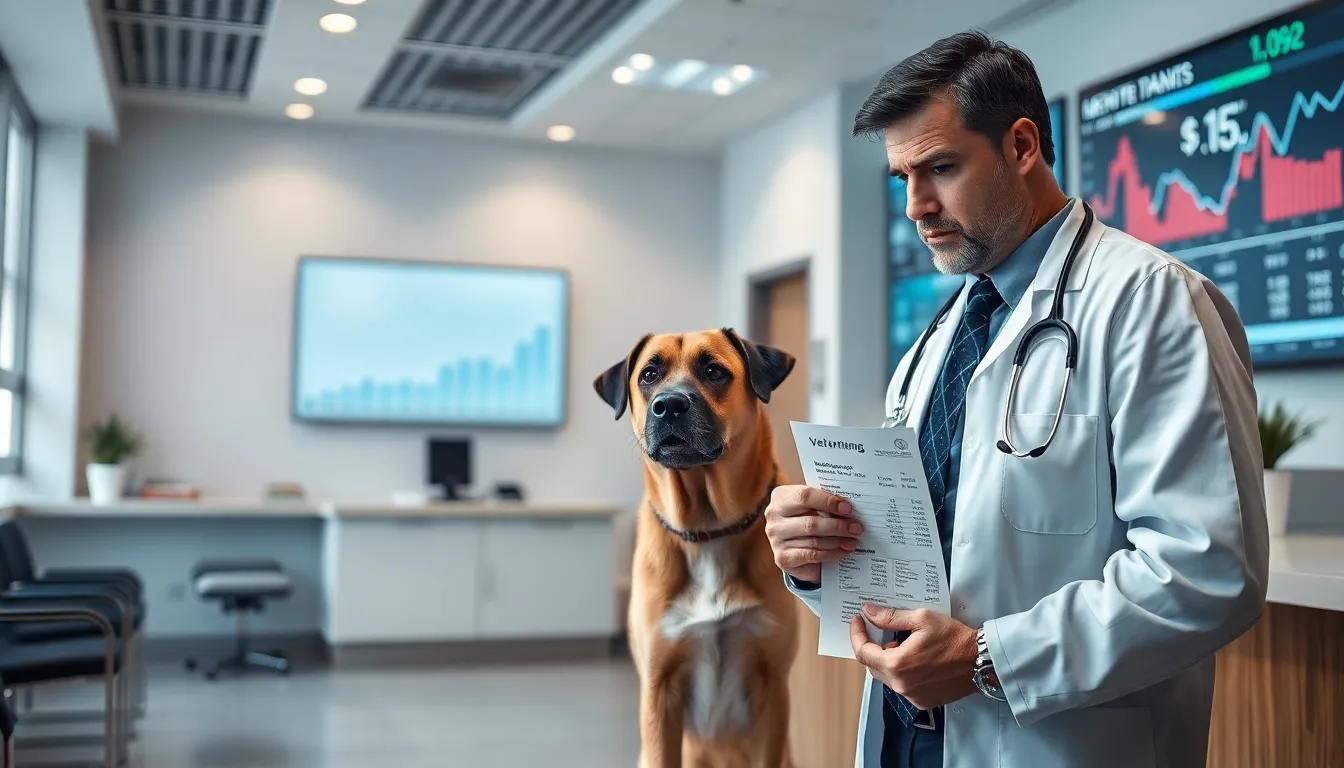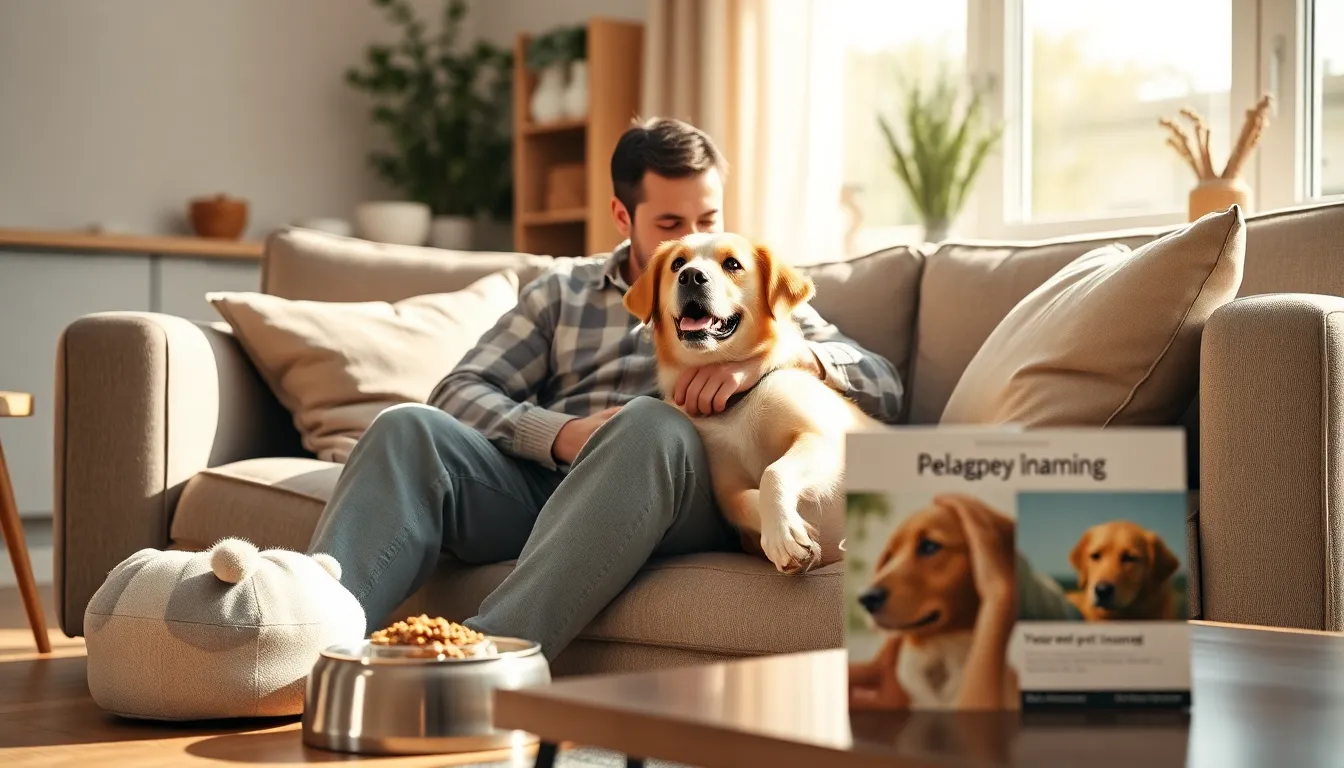Why health care for pets has been surging stems from a complex interplay of escalating operational costs, heightened profit demands from corporate ownership, and profoundly strengthened human-animal bonds. These intertwined economic and emotional factors have collectively driven pet healthcare expenses to nearly double over the past five years, impacting pet owners globally.
Key Implications:
- Financial Burden for Pet Owners: Escalating operational costs and profit-driven corporate structures are making essential veterinary care increasingly unaffordable, pushing many owners to seek pet insurance as a financial buffer.
- Shifting Veterinary Business Model: Corporate acquisitions and inherent economic principles like Baumol’s cost disease are transforming veterinary practices, intensifying profit demands while driving up service costs independent of productivity gains.
- Deepened Pet-Owner Relationships: Strengthened human-animal bonds, particularly post-pandemic, are leading owners to view pets as full family members, significantly increasing demand for and investment in advanced, specialized, and preventative care.

Pet Healthcare Costs Double Due to Operational Expenses
The significant rise in pet healthcare expenses has become a pressing concern for many animal owners. Over the past five years, pet healthcare costs have almost doubled, creating financial strain for households nationwide. This dramatic surge is not primarily due to luxury treatments but rather a direct consequence of escalating operational costs within veterinary practices. Understanding these underlying economic pressures is crucial to comprehending why health care for pets has been surging so dramatically. Veterinary clinics, like many service-based industries, face increasing expenses that directly translate into higher service fees for pet owners.
The Persistent Weight of Labor Costs in Veterinary Care
A primary driver behind soaring veterinary bills is the substantial and ever-increasing cost of labor. In many veterinary practices, labor expenses now exceed 50% of the overall operational costs. This proportion highlights the human-intensive nature of quality animal care. Providing comprehensive medical attention for pets requires skilled veterinarians, certified technicians, and dedicated support staff, all of whom command competitive wages and benefits. The demand for these professionals continues to grow, further pushing up labor costs.
This phenomenon can be partly explained by Baumol’s cost disease. This economic principle describes how productivity gains in service sectors, which are heavily reliant on human labor, often lag behind those in manufacturing. While a factory can automate processes to produce more goods with fewer workers, a veterinary consultation or a complex surgery still requires the same amount of skilled human interaction and time. Consequently, wages in these service professions must rise to remain competitive with other sectors, even without corresponding increases in output or efficiency. This continuous upward pressure on wages inevitably drives up the price of services like veterinary care, offering a clear explanation for why health care for pets has been surging. It’s a structural economic challenge that practices cannot easily circumvent without compromising care quality. Many pet owners struggle to afford these rising costs, impacting access to essential services (PetAll.net).
The Rising Tide of Medical Supply Expenses and Tariffs
Beyond labor, the cost of medical supplies represents another significant factor contributing to the doubling of pet healthcare expenses. Veterinary practices rely on a vast array of medications, instruments, and consumables to provide effective care. The prices for these essential items have seen substantial increases recently. For instance, a basic box of exam gloves now costs more than twice what it did just a year or so ago, indicating a price increase of over 100% within a relatively short period. This specific example is indicative of broader trends affecting the supply chain for veterinary medical products.
The impact of tariffs has made medication and other critical medical supplies significantly more expensive. Items such as bandages, surgical gowns, syringes, and various pharmaceutical products often incur higher costs due to import duties and trade restrictions. These tariffs are external factors that veterinary practices have no control over but must absorb and pass on to some extent. The cumulative effect of these increases in both basic consumables and specialized medications adds considerable pressure to the operational budgets of veterinary clinics. Such supply chain challenges directly contribute to the increasing financial burden on pet owners and are a key element in understanding why health care for pets has been surging. Finding ways to mitigate these rising supply costs without compromising patient care remains a significant challenge for the veterinary industry.
The combination of escalating labor costs, driven by economic principles like Baumol’s cost disease, and the significant increases in medical supply prices, exacerbated by tariffs, paint a clear picture. These operational challenges fundamentally underpin the nearly doubled pet healthcare costs observed over the past five years. Veterinary practices are navigating a complex economic landscape where providing essential care becomes increasingly expensive. For pet owners, understanding these factors helps clarify that the rising costs are often a reflection of systemic economic pressures rather than inflated charges for services. Investing in comprehensive pet insurance policies can offer financial relief against these substantial and growing veterinary expenses (PetAll.net). The escalating costs also highlight a growing trend where pet care is increasingly viewed as a luxury (PetAll.net).

Private Equity Acquisitions Intensify Profit Demands on Veterinary Practices
The escalating cost of veterinary services is a significant concern for many pet owners, directly contributing to Why health care for pets has been surging. A key factor in this trend is the growing acquisition of veterinary practices by private equity firms. This business model introduces increased pressure on generating profits, fundamentally altering the traditional operational dynamics of pet healthcare and leading to higher expenses for crucial care.
The Shifting Landscape of Veterinary Ownership
Historically, veterinary clinics were predominantly independent, owned and operated by the veterinarians themselves. This model often prioritized patient care and long-term client relationships over aggressive profit maximization. However, recent years have witnessed a dramatic shift. Data indicates that veterinary care has been increasingly taken over by private equity firms, transforming local, community-focused practices into components of larger corporate portfolios.
Private equity firms acquire these practices with the goal of improving their financial performance and selling them for a profit within a few years. This strategy often involves implementing standardized procedures, centralizing purchasing, and streamlining operations. While some changes can lead to efficiencies, the overarching objective is always to enhance revenue and reduce costs, ultimately boosting profitability for investors. This redefines pet care from a purely medical service to a robust market opportunity, a trend explored further in discussions about pet care becoming the next luxury opportunity. The evolving perception of pet care highlights the economic attractiveness driving these acquisitions.
Intensified Profit Demands on Vets
A critical consequence of this corporate ownership shift is the direct impact on veterinary professionals. A revealing 2023 study found that vets at corporate-owned practices are under significantly more pressure to generate profits compared to those in independent practices. This pressure often manifests in various ways, influencing everything from diagnostic recommendations to treatment plans. Veterinarians may feel compelled to meet revenue targets or upsell services, which can create ethical dilemmas and compromise their clinical autonomy.
For many veterinarians, their professional calling is rooted in animal welfare and providing the best possible care. The imposition of stringent financial objectives can clash with these core values. This intense focus on the bottom line can lead to increased stress, burnout, and a potential reduction in job satisfaction among veterinary staff. Such an environment can also subtly shift the focus from the most medically appropriate treatment to the most financially advantageous, thereby affecting the quality and approachability of care.
Direct Impact on Pet Healthcare Costs and Pricing Strategies
The business model change directly influences pricing strategies in the pet healthcare sector, playing a significant role in Why health care for pets has been surging. When private equity firms acquire practices, they often implement strategies designed to maximize revenue per client. This can involve increasing the prices of routine services, diagnostics, medications, and surgical procedures. Corporate structures may also introduce new fees or package services in ways that lead to higher overall costs for pet owners.
This profit-driven approach can make essential veterinary care unaffordable for a growing number of pet owners. Surveys indicate that many pet owners are already struggling to afford necessary veterinary care, a situation exacerbated by rising costs. Understanding why many pet owners cannot afford veterinary care underscores the severity of this issue. Pet owners often find themselves facing difficult choices between their pet’s health and their financial stability. The lack of transparency in pricing across corporate chains can further complicate matters, making it hard for owners to compare costs effectively.
To mitigate the financial burden of these rising costs, many pet owners are now exploring options like pet insurance. Comprehensive pet insurance policies, such as those offering high annual limits without restrictions, can provide a financial safety net against unexpected and expensive veterinary bills. Exploring comprehensive pet insurance policies can help manage the financial risks associated with the increasing expenses of pet healthcare, providing crucial support when pet parents need it most. This shift in ownership has fundamentally reshaped the economics of pet care, making it imperative for pet owners to understand the underlying reasons behind the rising costs and explore proactive financial planning.

Owner Bonds Drive Increased Spending on Advanced Pet Care
The question of why health care for pets has been surging finds its roots in a profound societal shift, heavily influenced by recent global events. Pandemic lockdowns and the widespread adoption of remote work fundamentally transformed the relationship between humans and their animal companions. This period catalyzed a significant strengthening of pet-owner bonds, leading to a new cultural landscape where pet owners demonstrate a heightened willingness to invest in advanced care and pursue a broader range of services for their beloved animals.
The Pandemic’s Profound Impact on Pet Bonds
During lockdowns, pets often became some of the only consistent social interactions and a crucial source of companionship. This intensified daily connection fostered an unprecedented emotional intimacy between pets and their owners. The reliance on pets for comfort and stability during an uncertain time forged bonds that went beyond traditional ownership. This deepened emotional connection translates directly into a desire to ensure the best possible quality of life for these integral family members.
The shift to remote work further solidified this new dynamic. Spending all day with their pets allowed owners to become intimately aware of their animals’ daily habits, moods, and subtle health cues. This constant proximity increased their awareness of potential health issues, from minor limps to changes in appetite or energy levels. As a result, owners became more proactive in seeking veterinary advice and preventative care, noticing problems earlier than they might have in a pre-pandemic lifestyle.
A Cultural Evolution in Pet Ownership
An observed shift in the culture of pet ownership compared to a few years ago is undeniably clear. Pets are now more consistently viewed as full-fledged family members, a perception that dramatically influences spending habits. This cultural evolution means owners are increasingly committed to providing comprehensive care, mirroring the attention they would give to any other family member. The emotional investment now often includes a significant financial commitment.
This deepened bond fuels a demonstrable willingness to spend more on pet care. This isn’t just about basic necessities; it extends to high-quality nutrition, advanced diagnostics, specialized treatments, and preventative medicine. The emotional payoff of seeing a pet thrive, combined with the guilt of potential neglect, motivates owners to allocate substantial resources to their animals’ well-being. This contributes significantly to why health care for pets has been surging across various sectors. The growing market for advanced pet care is even prompting discussions about pet care as a luxury opportunity.
Investing in Advanced Care and Services
This evolving mindset is evident in the demand for a wider array of veterinary services and treatments. Pet owners are now actively looking for more options and more services, indicating a proactive and extensive approach to their pet’s health. This extends beyond routine check-ups to include specialized veterinary disciplines like oncology, cardiology, and orthopedics. They also seek out services such as pet physiotherapy, advanced dental care, behavioral therapy, and premium pet food subscriptions.
This increased demand reflects a desire for longer, healthier, and happier lives for their pets, which is a direct outcome of the strengthened human-animal bond. To manage the potentially high costs associated with advanced treatments and ongoing care, many pet owners are also exploring financial solutions. Investing in comprehensive pet insurance policies, for example, allows owners to access a broader range of medical interventions without the burden of prohibitive upfront costs. This strategic financial planning ensures that advanced care remains accessible when needed, further driving the growth in pet healthcare spending.
Featured image generated using Flux AI
WGBH: “Why health care for pets has been surging”
